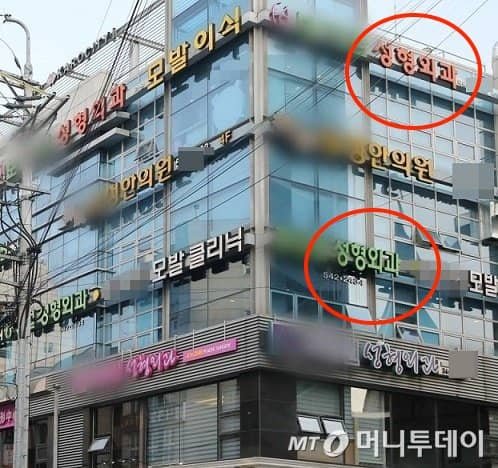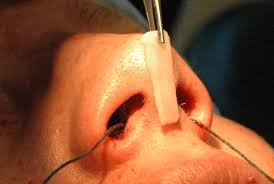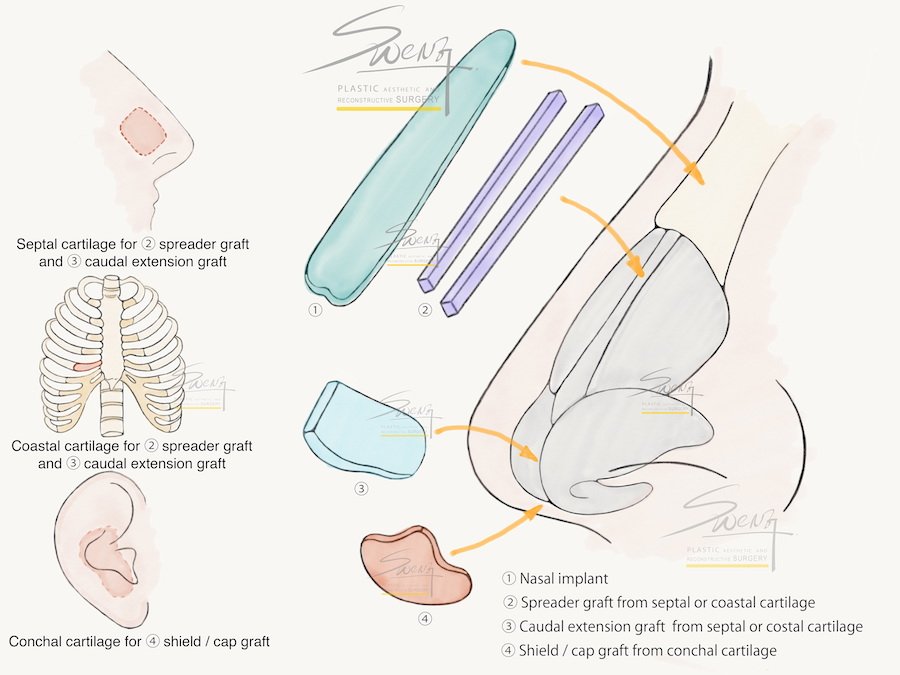
Jabba
Members-
Posts
40 -
Joined
-
Last visited
-
Days Won
5
Content Type
Profiles
Forums
Articles
Reviews
Everything posted by Jabba
-
Which clinic shall I choose?
Jabba replied to Alyani's topic in KOREAN PLASTIC SURGERY (NEW! ACTIVE FORUM)
Hi @Alyani, Welcome to the community Clinics Dream Plastic Surgery is a large clinic similar in size and departments to ones like Banobagi, View, ID, BK, etc... that has been around for a long time. It's brand has also has or has had overseas branches in Los Angeles and Singapore. This is going to be a larger clinic who is familiar with handling foreign patients. ITEM Plastic Surgery is a mid sized clinic similar to size and departments like Namu, Hyundai, Girin, Dessse etc.. that is also setup to handle foreign patients and will have English speaking staff. If you want to do face, bone and body work in one clinic, the above can do that. The Face Dental is a dental surgery similar to EverM, EU, Zeah, JUM, etc... that does jaw surgeries and facial bone contouring surgeries. 365 MC is a body contouring and liposuction hospital, they are a larger place that would be comparable to places like BK, View, etc, English Speaking Lawyers It's better to first use government resources if there is ever an issue or dispute. These can be free or at lower cost. https://www.k-medi.or.kr/eng/ Care Taker It might be better to do a homestay (stay with a Korean family who rents their house to tourists), or an airbnb host that is very helpful. Be careful about this though, sometimes these hosts are undercover illegal plastic surgery agents, so if you stay with a host and they start asking for details like which clinics are you going to, and they start offering a lot of opinions and advice about which clinics are good, and that they say they'll make appointments for you and personally escort you to the clinic etc.. that's a sign they are working as a secret illegal agent. It might be easier to just use an actual medical tour agency, and see if they have different service options for your budget. If you're comfortable with them managing your stuff, they might be able to help you with this, or you can try to ask a freelancer on job sites and job boards, but you should anticipate paying someone who come to check-in on you 20,000 to 40,000 Korean Won ($16 to $35 USD per hour).- 1 reply
-
- facial surgery
- rhinoplasty
- (and 4 more)
-
My Revision DES experience in South Korea (SK)
Jabba replied to happy1's topic in KOREAN PLASTIC SURGERY (NEW! ACTIVE FORUM)
Really great post @happy1 thank you sharing this journey. -
Surgery near Christmas and New Year
Jabba replied to Ppp's topic in KOREAN PLASTIC SURGERY (NEW! ACTIVE FORUM)
You can assume that Christmas and New Year's Day for sure, but other than that they'll be open because December is a popular month for surgery. Dec 15 is a Sunday, so let's assume you have surgery on 16th Monday, 7 to 8 days later will be Christmas eve, and clinic will be closed Christmas. -
Breast Augmentation - which PS should I choose?
Jabba replied to Janet's topic in KOREAN PLASTIC SURGERY (NEW! ACTIVE FORUM)
Hi Janet, Dr Park is pretty skilled and amicable, one of our experienced veterans has gone there for her treatment. Other places worth checking out if you are looking to go for smaller clinics would be Bong Bong, Mool Bang Wool, UBA Plastic Surgery. But for bigger places, Banobagi, Hershe, View, and TL. -
Looking to get my FC contour done
Jabba replied to Beautysecret's topic in KOREAN PLASTIC SURGERY (NEW! ACTIVE FORUM)
@Beautysecret don't be afraid to think of it as a two step process. You might have to do the bone contouring and then wait to see if there is any sagging and then do a lift later. -
Here is one easy trick (not fool proof) for plastic surgery clinics. In Korea, any medical doctor can perform surgery, but by law they cannot call their clinic a "Plastic Surgery Clinic" in Korean without being a board certified plastic surgeon. There are 3 plastic surgeon boards in Korea, and they require rigorous requirements and residency for membership. Once they have membership then they are allowed to write this string of text next to their clinic's Korean name: ___________ 성형외과의원 (Plastic Surgery Hospital/Clinic in the Korean language) ___________ 치과 (Dental Surgery Clinics) Example: XYZ 성형외과의원 It's more for telling the difference between a plastic surgery clinic that has a board certified plastic surgeon from a clinic that has a general medical doctor who is doing plastic surgery. A non-board certified clinic will use something like this instead: ____________ 클리닉 ("Clinic" in phonetic English) ____________ 성형클리닉 (Plastic Surgery "Clinic" in phonetic english) ____________ 의원 (Clinic in Korean)
- 3 replies
-
- 1
-

-
- verification
- credentials
-
(and 2 more)
Tagged with:
-
Top 5 Facial Plastic Surgeons in Korea!
Jabba replied to yoyo123's topic in KOREAN PLASTIC SURGERY (NEW! ACTIVE FORUM)
Best is going to vary from person to person, you have to first develop your own criteria and standards and then go from there. What type of clinic you prefer? Small, big, zero english or fluent in english, etc... Budget Style or preference for your nose Surgeon. Experienced & senior or open to newer surgeon All these things can help you narrow down things better. -
The first step would be visiting a local surgeon in your area, it would be good to see at least 2 or 3 if you can. It may cost some money (consulting fee), but even if they charge $100 per consultation for a total of $300. That may be a good investment because you could save a whole trip to Korea if you find the right person, and even if you don't, then you can look at it like $300 worth of education and less research you have to do now because you have a better idea about what to do and options for you nose, if you decide to start searching in Korea.
-
Rhino surgery with septum cartilage
Jabba replied to Nikki's topic in KOREAN PLASTIC SURGERY (NEW! ACTIVE FORUM)
If you keep hearing the same recommendation, it's probably because those are most viable options, even though they may not be options you like. You want to avoid "doctor shopping" which is looking for the surgeon who will just say yes because that may not be what's best for you. The surgeon has to work with the current state or anatomy of your nose and the quality of your cartilage, and these can expand or limit options in terms of what cartilage to use. Basics on Cartilage Grafts COSTAL CARTILAGE = Rib CONCHAL CARTILAGE = Ear SEPTAL CARTILAGE = Nasal Septum IRRADIATED / DONOR COSTAL CARTILAGE = Rib cartilage that came from another When a surgeon uses a piece of cartilage from your ear, septum or rib, they carve it into pre-defined shapes know as grafts, and these grafts serve different purposes, some for structure and stability, and others for shape and form. Septal cartilage is strong and sturdy material, and has many uses in rhinoplasty. It can be used in the dorsal / bridge area, but usually it's used in combination with a implant to increase the bridge especially for those with a low bridge. But this also depends on the amount and quality of your septal cartilage. Septal cartilage is also used in the tip area, and most commonly it's used to help give lift, projection and support to the tip, and ear cartilage is also used because it's round shape and softer material that works well with reshaping a nose tip. Septal cartilage -
Paying for surgery in Seoul
Jabba replied to Sandy1925's topic in KOREAN PLASTIC SURGERY (NEW! ACTIVE FORUM)
Clinics have different preferences in how they handle their payments. It would be good to ask them about their payment policies up front, so you know what to expect. Some clinics have taxes built into their prices and offer a tax refund with no difference in credit card or cash prices. These clinics tend to eat the fees and taxes. Other clinics may not like to absorb these fees and taxes and will have a preference for cash or pass fees like credit card or taxes (3% to 10%) onto you if you request credit card payment and or tax refund documents. Cash is very easy to hide, label and move around for accountants. Credit card transactions on the other hand are instantly logged and files to central tax offices. Cash You can bring up to $10,000 USD without declaring it to customs. You can bring more than $10,000 USD but you just have to fill out a form and let customs know when you arrive to Korea. You just tell them it's for a medical treatment. Exchange Rates If 1 USD is greater than 1,100 KRW then that's a pretty good rate, you want to be at least above this threshold. Asking Clinic to Exchange You can ask the clinic to convert the USD for you, and sometimes they will simply just do an online search for the exchange rate. Using Currency Exchange Airport Exchange Counter - Conveinent, but usually not the most competitive rates. Good for small amounts to get you by from the airport to your hotel. Banks - the safest and most convient banks close at 4PM in Korea Monday to Friday. You need your passport. Myeongdong Exchange Vendors - These are smaller independent money exchange shops located in the shopping district called Myeongdong, near the Chinese embassy. The rates are better than banks, no fuss or paperwork, but be careful walking around with a lot of cash. https://beautyhacker.com/topic/997599-best-places-to-exchange-cash/ -
Pocket WiFi or SIM?
Jabba replied to Ppp's question in Travel Q & A - Translation, Travel, Food, & Stay
Here are couple of options: 1) Pre-order SIM with unlimited data plans (BEFORE GOING TO KOREA) http://www.egsimcard.co.kr/ You have to order this before you arrive to Korea it can be delivered to your accommodation or you can pick it up at the airport. Good for short and long stays. 2) Get SIM / Pocket WiFi at the airport (ALREADY IN KOREA, but at Airport) There are SIM card and pocket Wifi eggs available for rental. This is convenient for short stays under 15 days. 3) Pre-paid SIM in the City - KT Olleh Shop (Left the airport, but in the city) https://global.olleh.com:444/eng/contents/about.do Going to an KT Olleh Global Shop (one near Gangnam Station) will allow you to get a SIM with data plan and a local number. This can be a good option for both short and long stays. Visit a global shop, it will be easier to deal with. You need your passport, and must pay in cash only. ------------------- Pocket WiFi's are nice, but having a SIM is just a lot easier, and you don't have to worry about carrying around another device




